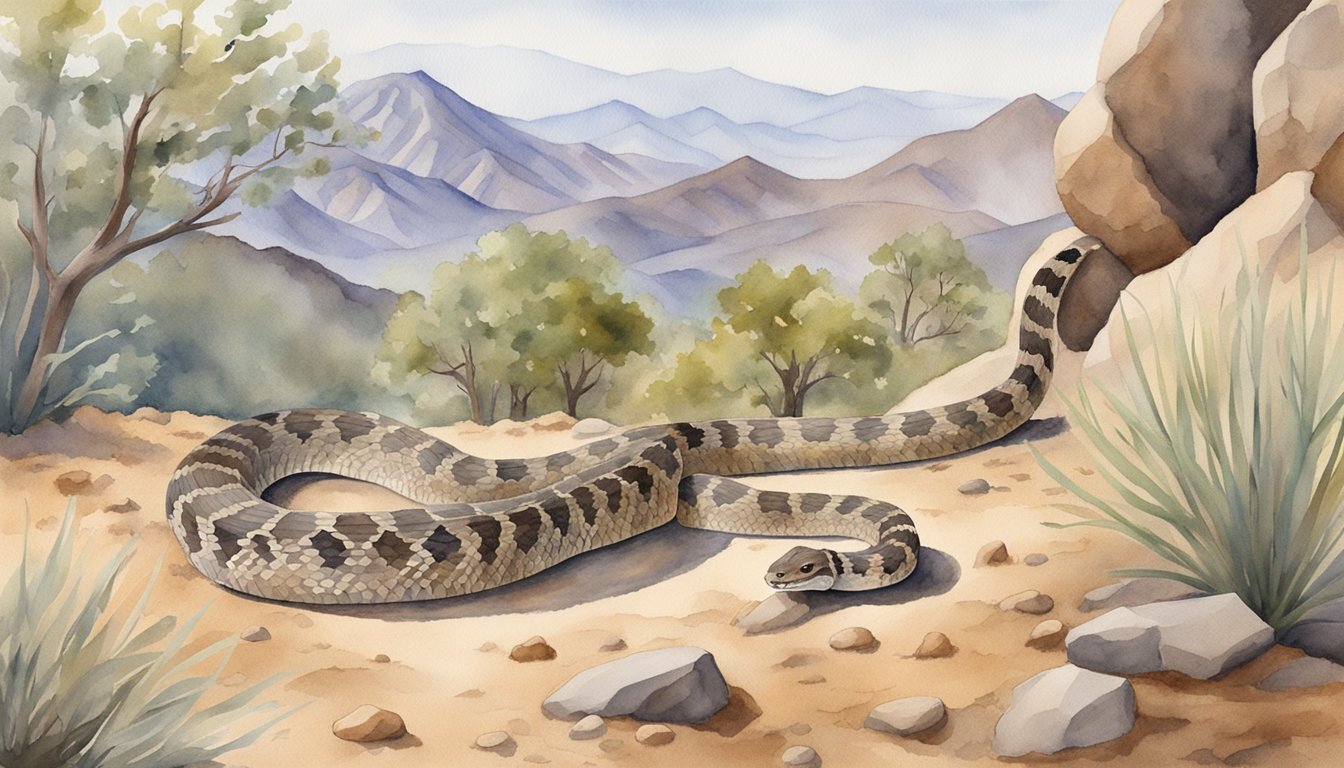Understanding Diamondback Rattlesnakes
Diamondback rattlesnakes, recognized for their distinctive markings and potent venom, play a crucial role in the ecosystems of North America. This section explores their species characteristics, physical traits, habitats, and predatory behaviors.
Species Overview
The term ‘diamondback rattlesnake’ encompasses two main species in North America: the eastern diamondback (Crotalus adamanteus) and the western diamondback (Crotalus atrox). Both belong to the pit viper family. They are often identified by their distinct diamond-shaped patterns and are a crucial part of the ecological balance, controlling small mammal populations.
Physical Description
Diamondback rattlesnakes are known for their large size, with average lengths of 3 to 6 feet, though the eastern species can exceed 8 feet. They feature a series of hexagonal dorsal scales and a rattle at the tip of their tail, which they use as a warning signal to potential predators or threats.
Habitat and Range
These venomous snakes inhabit diverse regions across the United States, with the eastern diamondback found in the southeastern states like Georgia and Alabama, and the western diamondback distributed across the southwestern regions. They thrive in various habitats, from dry deserts to moist forests, adapting well to different environments.
Diet and Hunting Methods
Diamondback rattlesnakes are carnivorous and primarily feed on small mammals, birds, and other reptiles. They employ a sit-and-wait hunting strategy, using their heat-sensitive pit organs to detect prey. Upon locating a target, they strike rapidly, injecting venom to immobilize and later consume their prey.
Human Interaction and Conservation

Diamondback rattlesnakes, particularly those in states like Florida, Mississippi, and Louisiana, have a complex relationship with humans, which greatly impacts their conservation status. While they are venomous and can be a safety concern, they also play a crucial role in the ecosystem which is recognized by various conservation efforts.
Safety and Prevention
When it comes to interactions between diamondback rattlesnakes and humans, safety is a primary concern. These snakes are not typically aggressive but will defend themselves if threatened, and a snakebite can cause severe tissue damage and swelling. In areas where diamondbacks are prevalent, it’s advised to be aware of your surroundings, particularly in habitats that these snakes favor. Preventive measures include wearing thick boots and gloves when working outdoors, and being careful when walking through areas of dense vegetation or while hiking. The use of antivenom has greatly reduced fatalities from diamondback bites in the United States.
Conservation Efforts
Conservation groups often focus on the Eastern and Western diamondback rattlesnakes’ habitats, aiming to protect these regions to sustain the snakes’ populations. Despite population declines, the Eastern diamondback has not yet acquired protective status on the IUCN Red List, but it is considered a species of conservation concern. Conservation efforts stress the importance of these rattlers for maintaining a balanced ecosystem, as they help control populations of their prey, such as rodents.
Medical Significance
The venom of diamondback rattlesnakes has a high medical significance. Venom research has led to improvements in antivenom therapies, essential for treating the bites. Additionally, venom components are being researched for their potential in developing treatments for various medical conditions, including effects of venom on blood circulation and possibly even cancer treatments. This medical potential adds another layer to the snake’s importance beyond its ecological impact, highlighting a need for its preservation.

